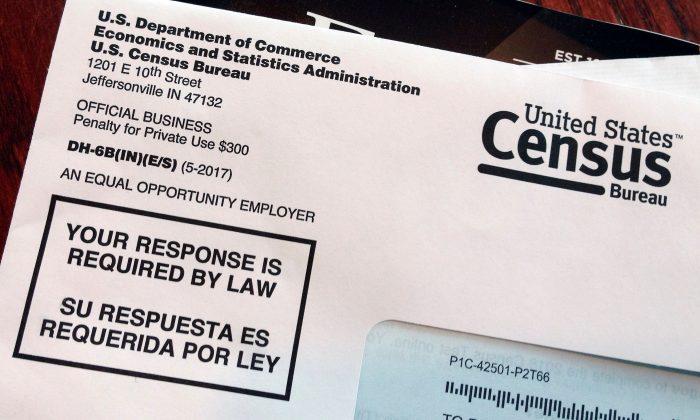The Supreme Court is currently deliberating the inclusion of a citizenship question in the 2020 decennial census, which was unexpectedly barred by a New York federal district court judge in January. The Supreme Court decisions for this term are due by the end of June, which is also when census printing must commence.
A citizenship or birthplace question has routinely been included in the decennial census for decades. From 1820 to 1950 (13 enumerations, excluding 1840), the question was a standard inquiry. From 1960 to 2000, it was placed on the long-form questionnaire received by approximately one in six households.
“Is this person a citizen of the United States?”
This question is a general informational item, such as occupation, marital status, and place of birth. It is reasonable for a nation to determine the number and location of its citizens, which extends the general purpose of the census.
The Constitution requires a census every 10 years, primarily for apportionment of House members and allocation of federal resources.
The citizenship item is not utilized for those necessary reasons, rather the Constitution requires the enumeration of “whole persons” (current residents) for apportionment and allocation (14th Amendment, Section 2, “... counting the number of whole persons in each State”; Article I, Section 2, clause 3, “... adding to the whole Number of free Persons,” as modified by the 14th Amendment).
- Apportionment by state population of 435 members (fixed number since 1911) in the House of Representatives.
- Allocation of federal program funds ($675 billion in 2015).
- Distribution by state population of 435 members (fixed number) in the Electoral College. This is identical to and the result of Item 1 above.
Each state has an equivalent number of electors as within the House and Senate; for example, California has 55 electors (53 House members, and two Senate members). But, congressional delegates cannot serve as electors. When the population in any state increases, so should the number of electors. In this manner, for most states, the Electoral College reflects the popular vote.
In January, a New York federal district court judge barred inclusion of the citizenship question. On April 23, the Supreme Court began hearings on the question.
The 2020 decennial census should commence printing by the end of June, which coincides with the Supreme Court’s session completion and announcements on pending decisions.
As an aside, the census must be ready for mailing by April 1, 2020. Once completed and returned, encompassing several months, results should be prepared and finalized by the end of December 2020, and reported to Congress the first week in January 2021. This is well after the 2020 general election.
Thus, the 2020 census will influence midterm elections in 2022 and the presidential election in 2024.
Although the citizenship question is a routine informational item not considered with apportionment and allocation, opposition contends that it would be utilized to redistrict congressional boundaries within states.
Redistricting occurs after the decennial census and establishes delineations of territory and constituents for each House member. This cartographic exercise is always a state matter, and is often accomplished for political reasons by both parties.
The more egregious versions are referred to as gerrymandering, which is a traditional political practice providing advantages to whichever party is in control of a state.
Redistricting is not a federal matter, but gerrymandering could reach the courts if it is particularly offensive and violates general principles of balanced contiguous districts and a basic civil rights concept of one person, one vote.
Although census data are not utilized for redistricting by the federal government, individual states may, or may not, consider census statistics when redistricting.
However, state political operations when redistricting are not necessarily interested in census data regarding “whole persons” or citizenship status.
State governors and legislators, those who engage in redistricting, have much better local statistics that reveal what really matters—registered voters!
All states have ongoing accounting of registered voter numbers by locations and party affiliations. Information at precinct levels is more relevant and precise for redistricting than any decennial census data.

Friends Read Free